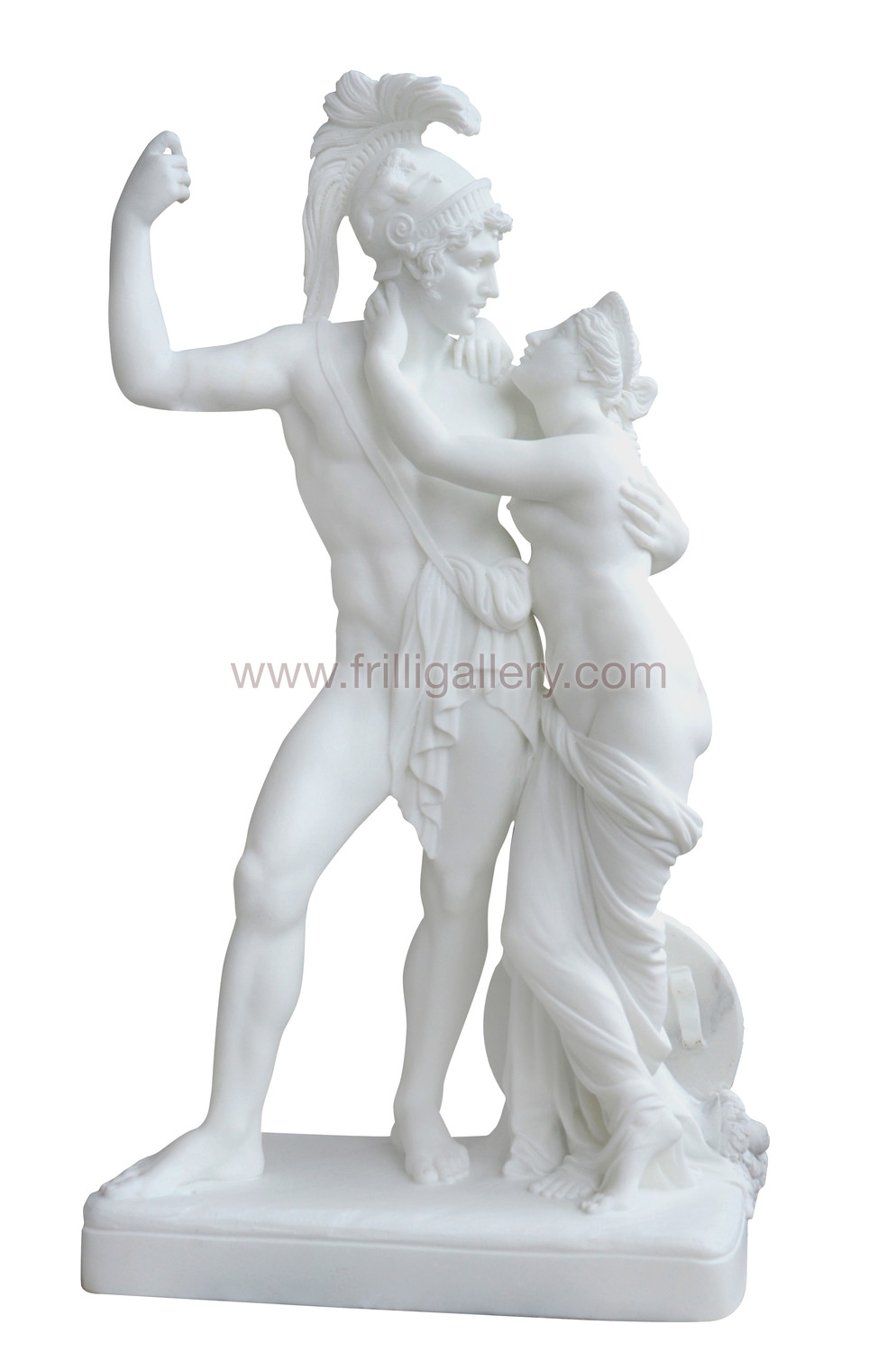


Antonio Canova (1757-1822) was an Italian sculptor and painter, considered the greatest exponent of Neoclassicism and for this nicknamed “the new Phidias”. It is the same Canova, in the exchange of letters with his friend Quatremore de Quincy, to make known that at the end of October 1816 the artist was involved in the realization of the model of clay, “as big as real or something more”, from the sculptural group of Mars and Venus. The work was commissioned by Prince Regent of England George IV the year before, which paid twice the amount required to ensure the exclusivity of the representation of the subjects. Two plaster casts were obtained from the clay form, while the marble, completed in 1822, was delivered to the British royal collections. It is still preserved at Buckingham Palace in London.
The choice of the subject was made by Canova himself and involved a novelty. The two figures are able to celebrate allegorically peace finally returned to the whole of Europe, with the end of the Napoleonic epic and the day after the Vienna Congress. The goddess Venus has always been associated with good luck, well-being, harmony and peace is here a figure softly posed by soft meat and legs wrapped in a thin drapery. The goddess of love is poured into the arms of her companion, intent almost to distract him and cover him with flattery. Mars, god of war, is depicted standing, virile, firm in the posture, carefully drawn musculature and supports the lance with the right arm. The shield and the sword are placed at their feet, next to it a basket with fruits symbolizing the return of prosperity and abundance guaranteed by the end of the war. Finally, it is interesting to note how the two opposing and powerful forces contrast, but join together in order to create a state of equilibrium.
Чтобы запросить информацию для этого товара, пожалуйста, используйте следующую форму